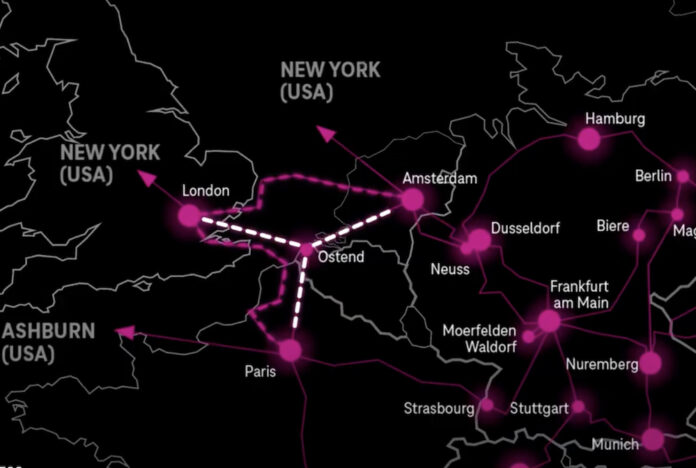The telco’s Global Carrier division completes London connection over three diverse routes to key hubs in Europe
Deutsche Telekom Global Carrier (DTIC) has expanded its Lambda network with a third routes across the channel from London to Ostend, joining Amsterdam and Paris as the other two routes.
The telco’s Lambda DWDM network, which utilises Ciena’s WaveLogic 5 800G technology, supports differing wavelengths over a single fibre. This means it can offer 1G, 10G, 100G and 400G services across its whole network. The telco used the Ciena kit to be an early pioneer of 400GE which, compared to 4 x 100GE, reduces the need for multiple interfaces, ports, power, space, equipment, and cooling.
DTIC said the third route was “quickly becoming industry standard” to support critical PoP locations.
“The three routes connecting London to continental Europe significantly support the region’s efficient exchange of traffic,” said DTIC head of international sales, network infrastructure solutions Beatrix Kapitany.
“That’s why we are especially proud to have implemented this third route, which will further increase the stability of customer services. But of course, we will not stop here and will soon follow up with additional routes for other locations to support the growth of our clients,” she added.
Heading Southeast
Last month DTIC added a new route between Sofia, Bulgaria and Varazdin, Croatia which it said resulted in a 5ms latency improvement over previous routes due to establishing “a trajectory between Sofia and Vienna”.
The telco said this new route was a viable substitute for the heavily utilised Budapest – Vienna connection and offers several PoPs from Varazdin, including locations such as Zagreb or Budapest. At the time, Kapitany said that while the priority was still delivering 100G services along the Sofia to Zagreb route, the telco was now capable of catering to bandwidths ranging from 1G and 10G all the way up to 400G.
The telco also recently launched a PoP in Balchick, Bulgaria which it said was a gateway that is the shortest route between Asia and Europe.


